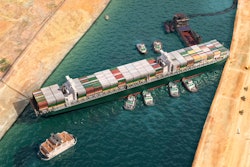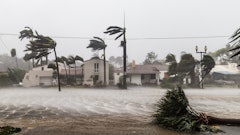
Protecting yourself with cargo insurance — also known as goods-in-transit insurance — is always the right decision. Whether by land, sea or air, shipping is full of risk with perils including theft, fire and more. All freight carriers are legally required to carry a minimum amount of liability insurance, but the coverage liability insurance provides is insufficient to fully protect you in the event of theft or cargo damage or loss resulting from natural disaster or accident. So, cargo insurance is a must.
Whether to obtain it through the shipper or an insurance company comes down to which option is more cost-efficient.
If shipping goods is a one-time or rare event for your business, obtaining coverage through the shipper is typically the better option. Shippers mark up the cost of cargo insurance — much the way car rental agencies do with auto insurance — but they don’t impose the $2,500-3,000 minimum premium insurance companies generally require, so for individual shipments, purchasing cargo insurance through the shipper usually winds up costing less.
If shipping is a regular function of your business, a program custom-designed by an experienced broker, with coverage provided by a reputable insurance company is the way to go. In addition to being both more cost-effective and specific to your needs, coverage from an insurance company gives you control over the claim process — a frequent source of dispute when the insurance is provided by the shipper. Several of the best-known commercial insurance companies offer excellent cargo insurance programs that include optional features allowing for customization, which affords you and your broker the opportunity to put your business out to market for the best available coverage and price.
What cargo insurance covers
Originally written for ocean transport, cargo insurance also covers inland and air transport, warehousing and other aspects of the shipping process under a Marine Extension Clause, Warehouse-to-Warehouse Clause or similar clause that continues coverage throughout the cargo’s route until it reaches the buyer.
When designing your policy, a good broker will instruct you to “take me on the voyage” to ensure goods are fully covered. This includes assigning responsibility for the cargo throughout transport to reduce the risk of dispute over coverage in the event of a claim.
Coverages you may need to consider for your business include:
Land cargo insurance. For goods transported by truck, van or train, this covers claims resulting from theft, collision and other risks.
Marine cargo insurance. This covers goods in transit by sea or air, including damage during loading and unloading, and risks such as weather, piracy and disaster. There are three basic categories of marine cargo insurance:
- Open cover. Policies in this category cover all cargo for a specified time period, often one year.
- Specific cargo or voyage. As the name implies, this kind of policy applies to specified goods or a single voyage.
- Contingency. When responsibility for damage or loss is in dispute, this coverage effectively provides backup, including in cases where “general average” is applied. For example, if a crew jettisons cargo to save a vessel, the loss is assessed to all shippers, based on an average of the vessel’s entire load. Contingent cargo insurance covers the claim.
Top marine and shipping risks
Worker shortages brought about by the Coronavirus disease (COVID-19) pandemic, port and supply chain disruptions resulting from the pandemic and natural disasters, the blockage of the Suez Canal by a massive container ship — all have contributed to turmoil in worldwide shipping and air freight with an impact on countless industries.
It’s also essential that you evaluate cargo insurance coverage on a regular basis.
According to the Allianz Risk Barometer, the Top 3 risks in the marine and shipping sector are as follows:
- Pandemic outbreak (51%)
- Business interruption (36%) – up from fourth in 2020
- Natural catastrophes (27%) – down from second in 2020.
Among all business sectors — both in the United States and internationally — business interruption ranks first on the 2021 Allianz Risk Barometer, followed by pandemic outbreak and cyber incidents, forming what Allianz calls the “COVID Trio.” Natural catastrophes rank sixth on the overall list of risks, immediately behind market developments and changes in legislation and regulation, respectively.
The point is, risks evolve — as do your business and the property and casualty insurance marketplace.


















